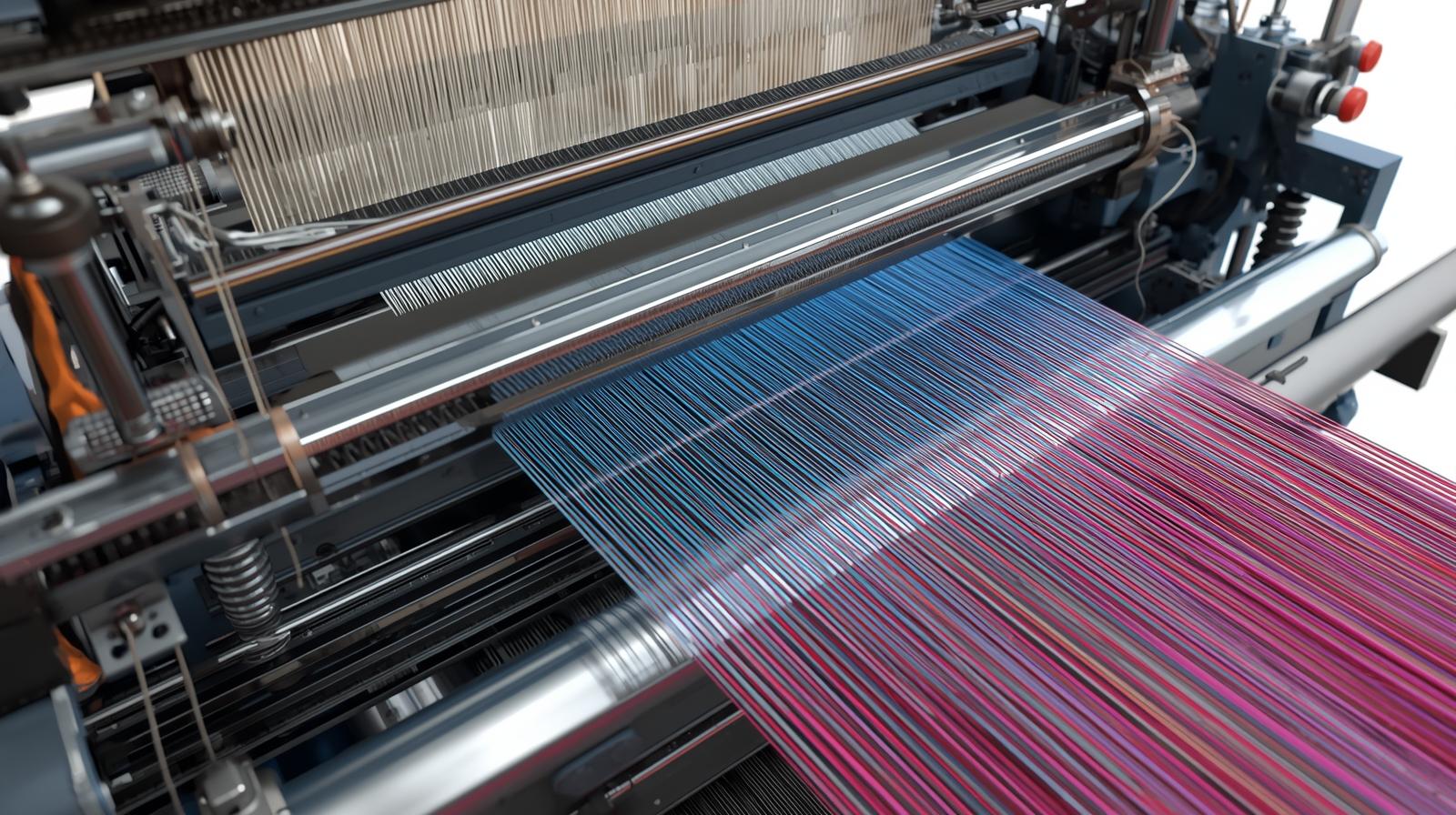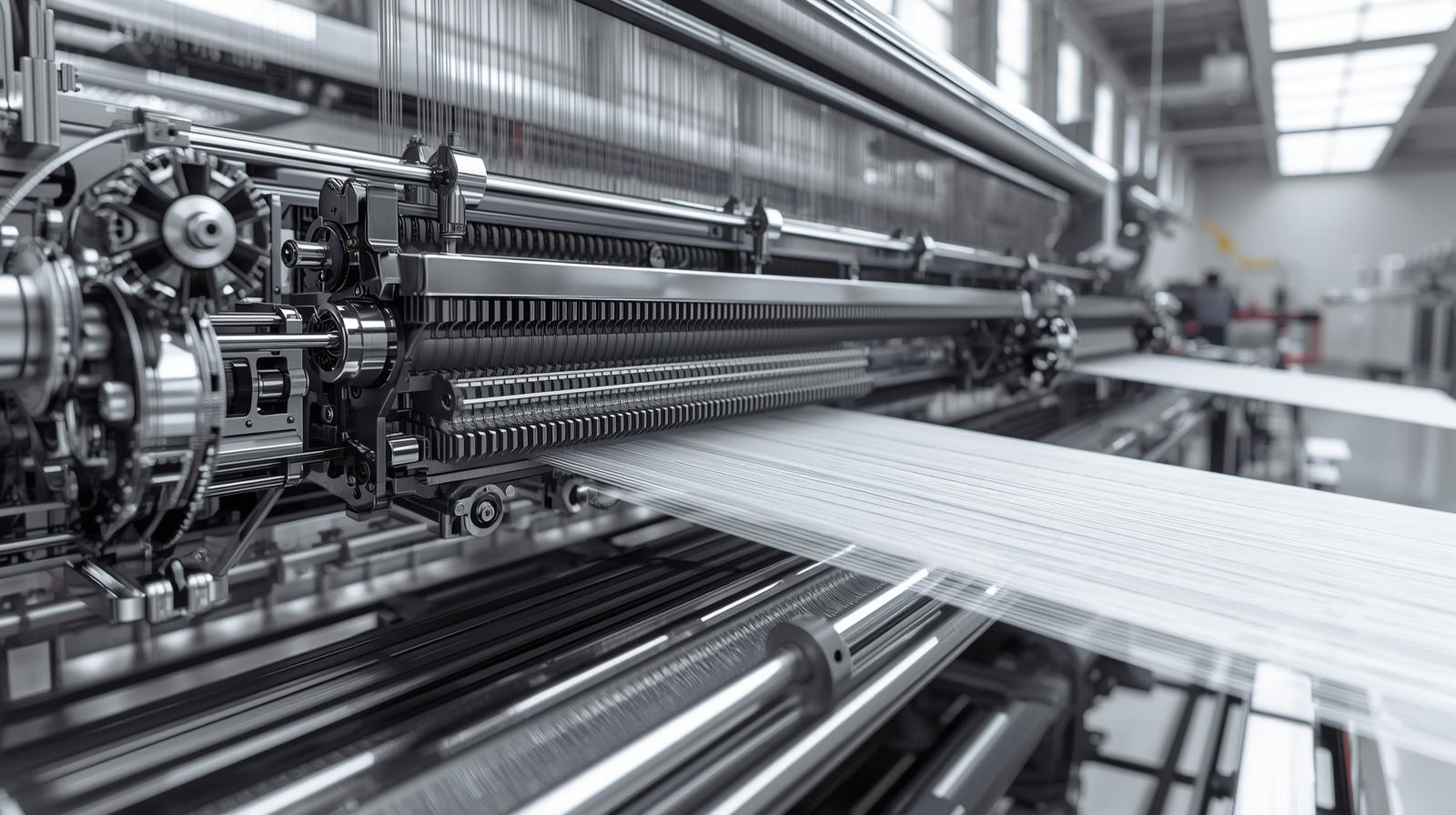The role of automation in 3D weaving has transformed the textile industry, enabling the creation of complex, three-dimensional fabrics with unprecedented precision and speed. Unlike traditional 2D weaving, which produces flat fabrics requiring cutting and sewing, 3D weaving constructs multilayered structures in a single process. This technique interlaces yarns in three orthogonal directions—warp, weft, and through-thickness—resulting in seamless, durable materials used in apparel, composites, aerospace, and medical applications. Automation integrates robotics, computer-controlled systems, and advanced software to streamline this intricate process, minimizing human intervention and maximizing output. As industries seek sustainable and efficient manufacturing, understanding the role of automation in 3D weaving becomes essential for innovators and businesses alike.
The global 3D Weaving Market size was estimated at USD 34.05 million in 2024 and is predicted to increase from USD 32.8 million in 2025 to approximately USD 59.7 million by 2030, expanding at a CAGR of 12.7% from 2025 to 2030.

Evolution of 3D Weaving Technologies
The evolution of 3D weaving technologies highlights how automation has simplified complex mechanisms. From ancient manual looms to modern mechatronic systems, advancements have made 3D fabric production more accessible. Dual-directional shedding mechanisms, for example, allow interlacing of multiple yarn sets without manual adjustments, improving efficiency. Automation has enabled the development of compact designs, such as rapier-based weft insertion, which reduces energy consumption and shed heights. These innovations stem from integrating robotics and digital controls, allowing machines to produce near-net-shaped preforms with minimal waste.
Further, the role of automation in 3D weaving is evident in the transition from 2D to fully interlaced 3D structures. Patents and research have introduced methods like linear-angular shedding and rotating disk systems, automating the creation of plain, twill, and satin weaves. Such systems ensure consistent yarn tension and alignment, crucial for high-performance materials. As automation evolves, it supports the weaving of advanced fibers like carbon and Kevlar, enhancing structural integrity for technical applications. This progression underscores how automated tools have democratized 3D weaving, turning it from a niche craft into an industrial powerhouse.
Key Automation Tools in 3D Weaving
Automation tools in 3D weaving encompass a range of hardware and software that orchestrate the entire process. Computer-controlled looms, equipped with jacquard devices and individual warp beams, allow precise control over each yarn’s length and position. These systems use algorithms to convert 3D digital models into weaving instructions, automating pattern synthesis and yarn path generation. For instance, shuttle mechanisms and robotic arms handle weft insertion and tightening, ensuring tight stitches without manual oversight.
Software plays a crucial role, with design tools simulating weave structures before production. Algorithms slice height fields into warp and weft paths, optimizing for material properties like density and rigidity. The role of automation in 3D weaving extends to vision-feedback systems, where cameras monitor and adjust operations in real-time, correcting distortions. These tools not only speed up fabrication but also enable the integration of functional threads, such as conductive or optical fibers, for smart textiles.
Benefits of Automation in Production Efficiency
Automation significantly boosts production efficiency in 3D weaving by condensing multiple steps into one seamless operation. Traditional methods involve beam warping, weaving, cutting, and sewing, often spanning weeks. Automated 3D systems, however, weave directly from yarn cones into finished shapes, like pant legs or bra prototypes, in minutes. This integration reduces lead times, allowing businesses to respond quickly to market demands and minimize inventory costs.
Moreover, the role of automation in 3D weaving enhances precision, ensuring consistent quality across batches. Digital controls eliminate human errors in yarn alignment and tension, resulting in stronger, lighter fabrics. Energy savings are another key benefit, with automated processes using up to 25% less power than conventional methods. By automating repetitive tasks, manufacturers can reallocate labor to skilled roles, fostering innovation and scalability in textile production.
Reducing Waste Through Automated Processes
Waste reduction is a hallmark of automation in 3D weaving, addressing environmental concerns in textile manufacturing. Conventional apparel production generates significant scraps from cutting flat fabrics, but 3D weaving produces near-net shapes, minimizing offcuts. Automated systems weave garments like seamless chinos or tubes directly, bypassing stitching and reducing fabric loss. This not only conserves resources but also lowers transportation emissions by enabling local microfactories.
The role of automation in 3D weaving further aids sustainability through precise yarn management. Algorithms optimize paths to use minimal material, while pretreated yarns skip dyeing stages. Pilots, such as those exploring Vega technology, demonstrate how automation creates durable products with woven-in labels, extending garment lifespan and reducing landfill contributions. Overall, these processes promote a circular economy, where efficiency meets eco-friendliness.
Precision and Quality Control Enhancements
Precision in 3D weaving is amplified by automation, ensuring fabrics meet exact specifications. Computer algorithms generate weave maps that control stitch placement, accommodating complex geometries like hemispheres or vests. Robotic components, including limiters and clamps, tighten threads uniformly, preventing distortions. This level of control is vital for applications requiring high strength, such as composite reinforcements.
Quality control benefits from integrated sensors and real-time monitoring, where deviations are corrected instantly. The role of automation in 3D weaving thus guarantees reproducibility, essential for industries like aerospace. Post-processing, like trimming, is minimized through accurate initial weaves, saving time and labor. Ultimately, these enhancements elevate product standards, making automated 3D weaving a preferred method for high-value textiles.
Integration of AI and Robotics
AI and robotics are integral to the role of automation in 3D weaving, enabling intelligent decision-making. AI algorithms analyze designs to predict optimal weave patterns, adjusting for material behaviors like deformability. Robotics handle intricate tasks, such as shuttle movement and yarn feeding, with precision unattainable manually. For natural fiber weaving, automated systems weave and feed materials into desired structures, creating lightweight composites.
In apparel, AI-driven tools re-engineer processes for single-step production, like 3D woven bras without seams. Robotics facilitate freeform surface weaving, using short-row shaping for custom fits. This synergy of AI and robotics not only accelerates production but also innovates applications, from smart wearables to ballistic protection.
Case Studies in Apparel Manufacturing
In apparel manufacturing, the role of automation in 3D weaving is exemplified by pilots redefining production. One initiative uses 3D technology to weave men’s chinos seamlessly, reducing waste and enabling customization. Automated looms produce leg tubes in minutes, assembled with minimal sewing, promoting U.S.-based microsites for transparency.
Another case involves natural fiber automation, where systems weave continuous structures for eco-friendly garments. These examples show how automation cuts costs, speeds delivery, and supports sustainable practices, transforming fast fashion into efficient, waste-free models.
Applications in Composites and Aerospace
Automation’s role in 3D weaving extends to composites and aerospace, where multilayered fabrics provide superior strength. Automated looms weave carbon fiber reinforcements, creating rigid structures for aircraft components. Algorithms quantify architectures, ensuring bonding probability and spacing for optimal performance.
In aerospace, 3D woven preforms automate near-net shaping, reducing material waste and assembly time. Robotic preforming combines weaving with fiber placement, enhancing structural integrity. These applications highlight how automation enables high-precision, lightweight materials critical for demanding environments.

Challenges in Implementing Automation
Despite benefits, implementing automation in 3D weaving faces challenges like high initial costs for advanced looms. Technical hurdles include handling steep slopes or complex shapes, where yarn deformability causes errors. Skilled workforce training is needed to operate sophisticated systems.
Additionally, integrating automation requires software compatibility and maintenance protocols. The role of automation in 3D weaving demands addressing these to ensure seamless adoption, with ongoing research focusing on user-friendly interfaces and cost-effective solutions.
In discussing common obstacles, consider:
- Compatibility with existing supply chains, requiring phased integration.
- Material limitations, as not all fibers suit automated processes.
- Scalability issues for small producers, balancing investment with returns.
- Regulatory compliance in industries like medical textiles.
Overcoming these through innovation is key to widespread use.
Future Trends in Automated 3D Weaving
Future trends point to greater integration of the role of automation in 3D weaving with emerging technologies. Advancements in AI will enable predictive maintenance and adaptive weaving, adjusting in real-time to variables. Hybrid systems combining 3D weaving with printing could create multifunctional fabrics.
Sustainability will drive trends, with automation optimizing recycled yarns. Microfactories will proliferate, localizing production and reducing carbon footprints. Overall, these developments promise a more agile, eco-conscious textile sector.
Download PDF Brochure @ https://www.marketsandmarkets.com/pdfdownloadNew.asp?id=88493628
Economic Impacts on the Textile Industry
Economically, automation in 3D weaving lowers unit costs by reducing labor and material expenses. Faster production cycles improve cash flow, while customization boosts market competitiveness. The role of automation in 3D weaving reshapes global supply chains, favoring reshoring and creating skilled jobs.
Industries benefit from reduced downtime and higher yields, enhancing profitability. As adoption grows, economies of scale will make technology accessible, fostering growth in sectors like fashion and composites.
The Transformative Power of Automation
In conclusion, the role of automation in 3D weaving is revolutionizing textile manufacturing, offering efficiency, precision, and sustainability. From apparel to aerospace, automated systems streamline processes, reduce waste, and enable innovation. As technology advances, its impact will deepen, shaping a future where 3D weaving is integral to smart, eco-friendly production. Embracing this evolution ensures industries remain competitive and resilient.
Explore In-Depth Semiconductor & Electronics Market Research
https://www.marketsandmarkets.com/semiconductorand-electonics-market-research-87.html
FAQs
What is the primary role of automation in 3D weaving?
The primary role of automation in 3D weaving is to streamline the creation of complex three-dimensional fabrics by integrating digital controls, robotics, and algorithms for efficient, precise production.
How does automation reduce waste in 3D weaving?
Automation reduces waste by producing near-net shapes directly from yarn, eliminating cutting and sewing steps that generate scraps in traditional methods.
What technologies are key to automation in 3D weaving?
Key technologies include computer-controlled looms, jacquard devices, AI algorithms for pattern design, and robotic arms for yarn handling and weft insertion.
Can automation in 3D weaving support customization?
Yes, automation allows for on-demand production and dynamic sizing during weaving, enabling personalized garments and components.
What industries benefit most from automated 3D weaving?
Industries like apparel, aerospace, composites, and medical textiles benefit from the strength, lightness, and efficiency of automated 3D woven structures.
Are there challenges in adopting automation for 3D weaving?
Challenges include high initial costs, technical limitations with complex shapes, and the need for skilled operators to manage advanced systems.
How does AI enhance the role of automation in 3D weaving?
AI enhances it by predicting optimal weave patterns, adjusting for material properties, and enabling real-time corrections during production.
What future trends involve automation in 3D weaving?
Future trends include AI-driven adaptive weaving, hybrid systems with 3D printing, and sustainable microfactories for localized production.
See The Latest Semiconductor Reports:
Speech and Voice Recognition Market Size, Share & Trends : https://www.marketsandmarkets.com/Market-Reports/speech-voice-recognition-market-202401714.html
Containerized Battery Energy Storage System (BESS) Market Size, Share & Trends: https://www.marketsandmarkets.com/Market-Reports/containerized-battery-energy-storage-system-bess-market-81525510.html
Building Information Modeling Market Size, Share & Trends 2030: https://www.marketsandmarkets.com/Market-Reports/building-information-modeling-market-95037387.html
Precision Aquaculture Market Size, Share & Trends: https://www.marketsandmarkets.com/Market-Reports/precision-aquaculture-market-242307580.html
Intelligent Transportation System Market Size, Share & Trends: https://www.marketsandmarkets.com/Market-Reports/intelligent-transport-systems-its-market-764.html
